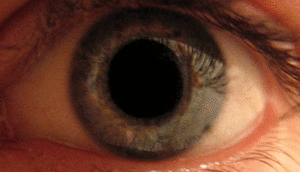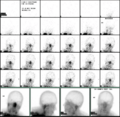Brain death facts for kids
Brain death means that a person's brain has completely stopped working. It's a permanent condition, meaning it cannot be fixed or reversed. When someone is brain dead, no part of their brain shows any activity. This means no oxygen goes to the brain, and there's no electrical activity happening there.
The brain controls everything our body needs to do to stay alive. For example, it manages breathing, body temperature, heart rate, and many other vital functions. If a person is brain dead, their brain can no longer control these things. They cannot breathe on their own, and they will never wake up or be aware of what is happening around them.
Sometimes, people who are brain dead are kept alive for a short time using special machines and medications. For instance, doctors might use a machine called a ventilator to help pump oxygen into their lungs. While these machines can keep other organs working for a while, they cannot help the brain recover. Eventually, the person's other organs will also stop working.
Contents
How Doctors Know Someone is Brain Dead
Doctors can figure out if someone is brain dead by carefully examining them. They will check for certain automatic body reactions, called reflexes, that are controlled by the brain. They also see if the person can breathe without help.
If a person is brain dead, doctors will find:
- The person has no reflexes. For example, they won't gag if the doctor touches the back of their throat.
- The person's pupils (the black centers of their eyes) do not change size when light shines on them or when it's dark.
- The person does not move or react if the doctor does something that would normally cause pain, like pinching their skin.
- The person does not try to breathe on their own.
Before saying someone is brain dead, doctors check for any other problems that might look similar. For example, a very low body temperature can sometimes make someone seem unresponsive. Doctors usually wait between six and 24 hours before checking again. This makes sure there are still no signs of brain activity. Then, a second doctor performs the same tests. If both doctors agree, the patient is officially diagnosed as "brain dead."
Quick Tests for Brain Death
Sometimes, doctors use other tests to diagnose brain death right away. These tests include:
- EEG: This test records the electrical activity in the brain. A brain-dead person will show no electrical activity at all.
- Brain scans like CT scans: These scans show if blood is flowing to the brain. A brain-dead person will have no blood flowing to their brain.
What Causes Brain Death?
Brain death happens because of a very serious injury to the entire brain. The most common reasons for this are:
- A very bad head injury.
- A stroke, which can cut off the brain's oxygen supply or cause bleeding inside the brain.
- Swelling in the brain. This can happen from an infection like encephalitis, or if the brain doesn't get enough oxygen.
When there is swelling or bleeding in the brain, it can stop blood from flowing to the brain. It can also push on the brainstem, which is a very important part of the brain. If the pressure gets too bad, it can crush the brainstem.
Images for kids
See also
 In Spanish: Muerte encefálica para niños
In Spanish: Muerte encefálica para niños



